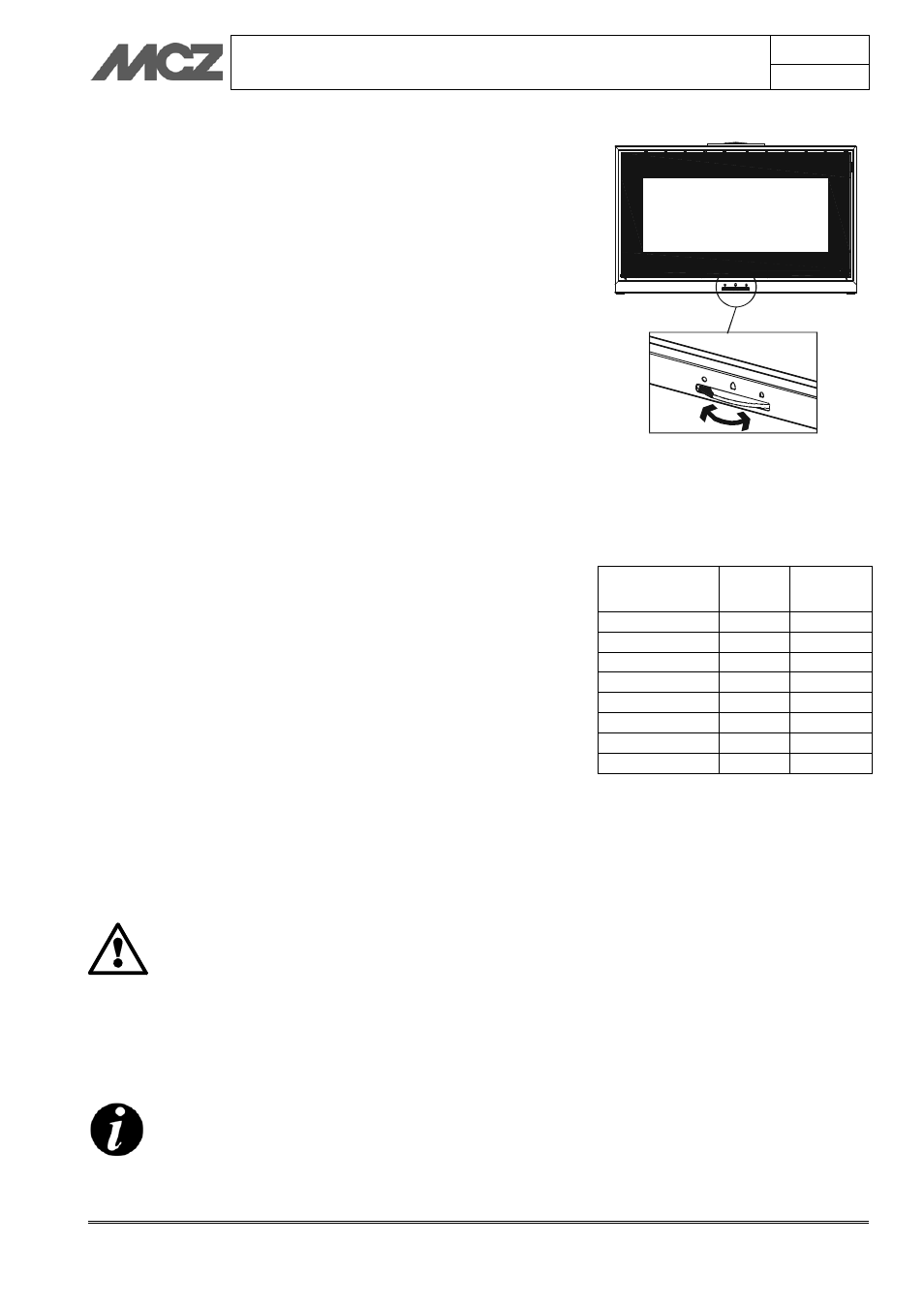Phases for first test lighting, Choice of fuel – MCZ Vivo 70 Wood User Manual
Page 35

Chapter 6
INSTALLATION AND USE MANUAL
page
35
Operation
Technical service – MCZ Group S.p.A. all rights reserved - Reproduction prohibited
6.2.1. Phases for first test lighting
Make sure you have read and completely understood the
contents of this instruction booklet.
Remove any components which might burn from the fireplace
stove and door (Packaging, various instructions and adhesive
labels).
Remove the stickers from the ceramic glass or the high
temperature could melt them and irreparably damage the glass.
In this case, the MCZ warranty does not cover the glass.
Completely open the front register of the combustion air. (turn
the lever all the way to the left)
Place wood in small pieces that is well dried (humidity 15/20%).
Light the fire at low power without excessively heating the
structure. It is normal that odours from manufacturing residue
will form the first time lighting occurs, and will disappear after a
lighting at full power has occurred a few times.
6.3. CHOICE OF FUEL
To obtain the maximum performance from your VIVO fireplace stove, it
is of primary importance to use wood with suitable characteristics.
It is advisable to use wood for heating such as oak, beech, locust
tree, or oak with good calorific energy, or logs of pressed wood that
do not have resin. These have a high calorific power and must
be used with caution to avoid overheating which could damage
the stove.
It is advisable to use fuels such as poplar, pine, lime tree, or
chestnut which have low calorific power, since they are soft wood and
also they do not burn for a long time.
Avoid using fuels such as pine, fir, and olive as they contain a high
degree of resin and their combustion may substantially soil the fire
mouth and the ceramic glass; also, they do not have an exceptional
yield.
For all types of wood listed, the humidity they contain is
essential because it determines the calorific energy.
Do not use treated fuels (such as painted or
varnished wood, or particle board) or unsuitable
materials (such as plastics and derivatives), which
could release toxic or polluting substances. Do not
burn rubbish.
The gases produced by combustion due the use of
unsuitable fuels cause damage to the fireplace stove
and the chimney, they cause pollution and can
compromise your health.
A high percentage of humidity produces condensation in the
smoke duct causing an alteration in the draught and
generating smoke and a significant deposit of soot on the
glass of the door and in the flue pipe with a possible risk of
a chimney fire later on.
Wood drying
time (i.e. beech)
%
humidity
Heat
power
Kcal/h
Freshly cut
50
/
3 months
40 2410
6 months
35
2700
9 months
30
2900
12 months
25
3150
15 months
20
3400
18 months
15
3710
21 months
10
3980
Figure 13 – Calorific energy (e.g. beech) in
relation to humidity contained.
Figure 12 – Maximum adjustment of
combustion air opening
